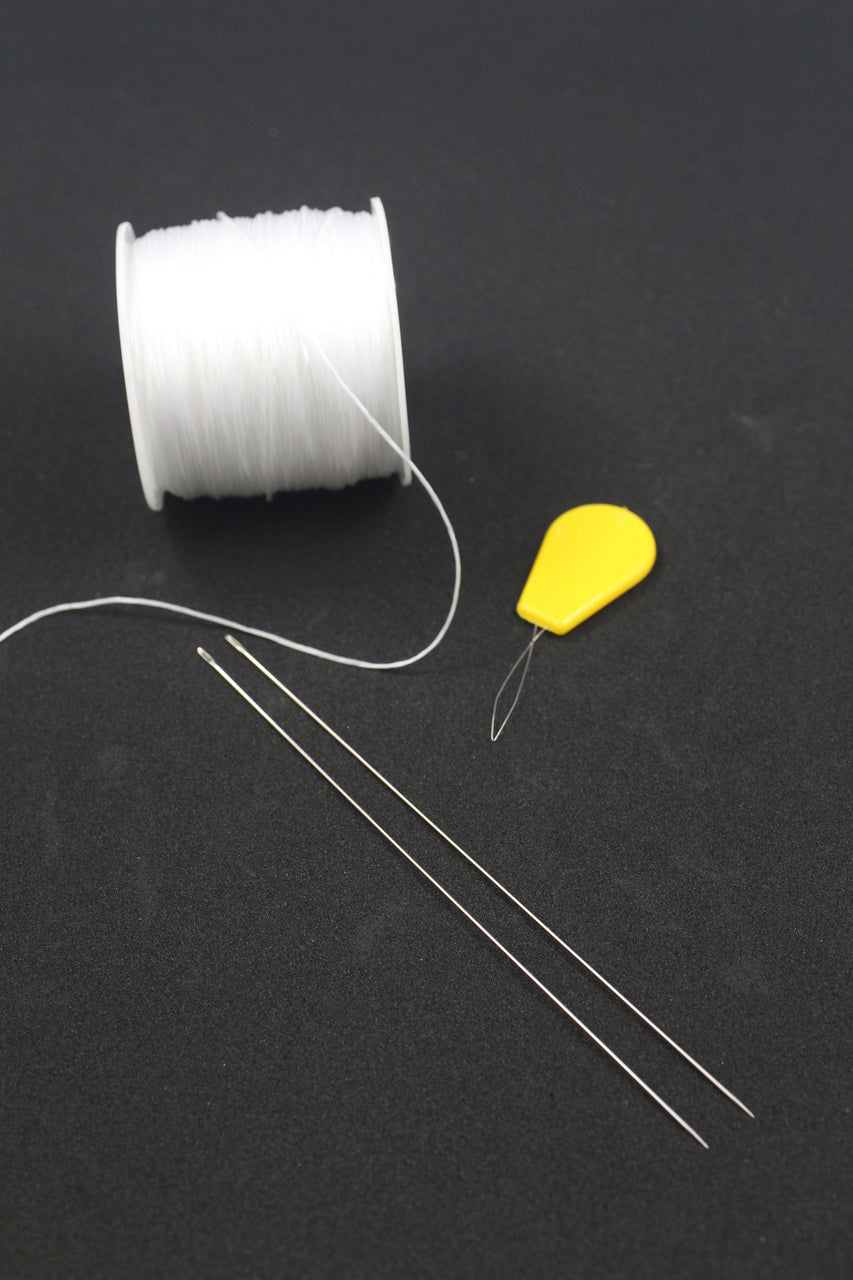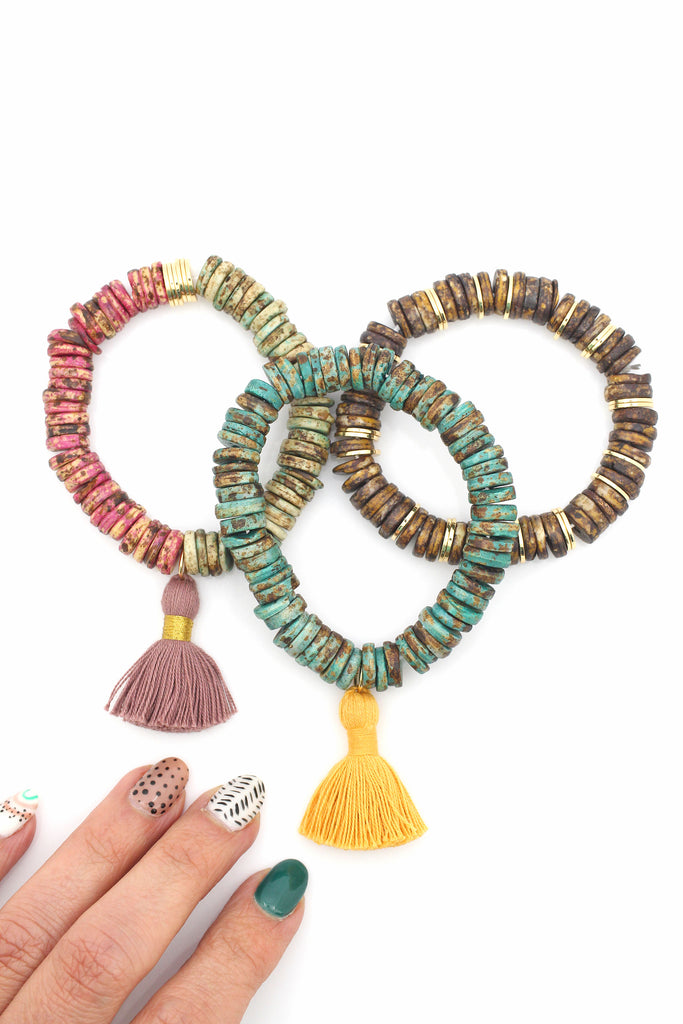What Do I String That On?
Whether you're new to beading or an experienced bead stringer, sometimes the options for stringing materials can be overwhelming.
While there is no right or wrong stringing material, some materials certainly work better than others in regards to specific styles of beads. Sometimes it's a matter of ease when stringing, but other times it's a matter of the sturdiness of the finished piece of jewelry.
We've taken some of the mystery out of the situation in this blog post, to help guide your bead stringing endeavors. We've broken it down by bead style below:
Enamel Bead Bracelets
Enamel beads can be fairly heavy for their small size, and they have a small hole. Keeping these 2 characteristics in mind, we reccomend using Crystal Elastic or this Beading Elastic for making bracelets. Both will hold up fine with Enamel Beads, so it's a matter of personal preference. But keep in mind: your desired closure and stringing method will impact which type of elastic you choose.
Crystal Elastic:
- Does not require a needle; it has enough internal structure that it is easy to string the beads on one at a time with this elastic. Also, with most of the Enamel Beads, the hole size is so small that you will not be able to fit a threaded needle through the hole with Crystal Elastic.
- Works best with a dab of glue on your finishing knot, as it is a bit squirmy and the knots can come untied.
- Not as stretchy as the beading elastic, and will not stretch out as easily.

Beading Elastic:
- Best for 2-hole Beads
- Requires a needle because it is not strong enough to hold up on its own when you are stringing the beads on. We reccomend the long beading needles that we sell with the elastic, and a needle threader.
- Does not require glue, so it's easier to the hide the finishing knot inside a bead because the knot is small.
- Stronger than it seems; our Enamel Bead partners uses this elastic to make all of their Enamel Jewelry.

Enamel Bead Necklaces
While elastic is perfect for stringing bracelets, necklaces require a clasp of some kind, or a length that is long enough to fit over a head. So elastic is not the best option for necklaces made using Enamel beads.

We recommend either Waxed Nylon Beading Thread or a braided and nylon coated beading wire such as Beadalon, Soft Flex, or Accuflex. If you choose the Waxed Nylon Thread, you can follow the instructions in this blog to learn how to use a lighter and heat the wax on the cord, so you can use the thread as a needle. If you use the Waxed Thread, you can tie a knot directly to the clasp or jump ring, whereas if you use beading wire, you'll need crimp beads to attach the clasp or closure. Learn more about this method here.
Bone Bead Bracelets
All of our bone beads have a large(ish) hole. This does depend somewhat on what your reference point is for "large," but we generally consider anything over about 1.5mm to be a larger hole bead. This larger hole sizes gives you much greater flexibility when choosing a stringing material, and even allows for the cord or thread to be a part of the design.

One major consideration with bone beads and any other larger beads, is the weight of the finished piece. You want to make sure that your stringing material can stand up to holding the weight of the beads that you're going to string on it. While the Crystal Elastic that we discussed above is a good option, the Beading Elastic is probably not the best option unless you are using beads that are 8mm or smaller.
For bracelet making, Crystal Elastic would be your safest and easiest bet, with a dab of glue on the knot.
African Bead & Bone Bead Necklaces
Because necklaces are heavier and require a clasp, your options are similar to the options for the Enamel Bead Necklaces. If you want to use a clasp, braided beading wire is best.
If you prefer to make a macrame-style slip knot closure, our Waxed Nylon Thread is a great stringing option, and this is a helpful blog. Whatever stringing material you choose, the most important factors are: durability, how it compares to your bead hole size, and the method of attaching it to the closure. After those factors are addressed, the choice is yours!
Whatever stringing material you choose, the most important factors are: durability, how it compares to your bead hole size, and the method of attaching it to the closure. After those factors are addressed, the choice is yours!








Leave a comment